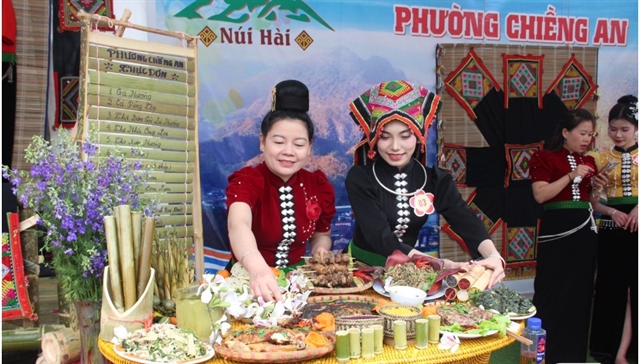 Features
Features
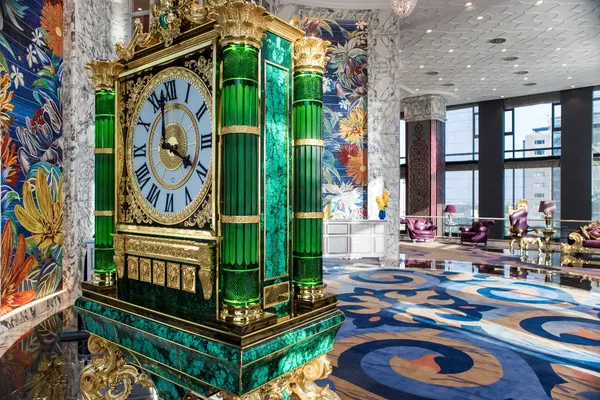
Fans of water puppetry can now explore one of Việt Nam’s oldest folk art forms through the new book Kể Chuyện Trên Mặt Nước (Telling Stories above Water).
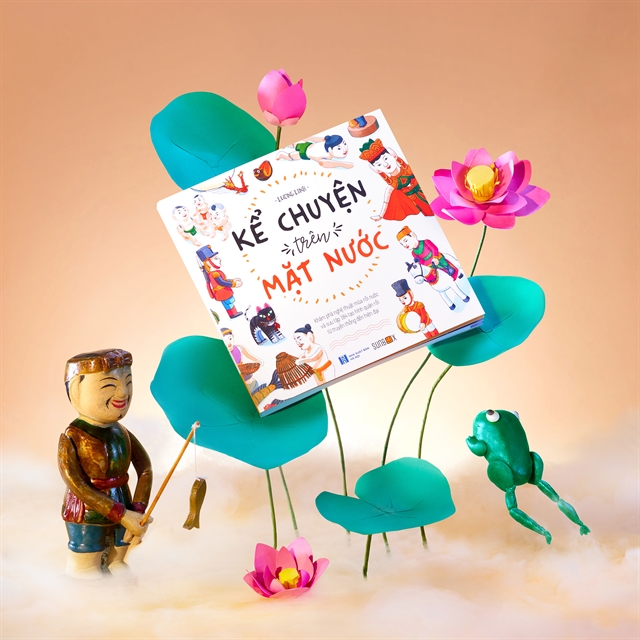
|
| The cover of Kể Chuyện Trên Mặt Nước (Telling Stories above Water). Photo courtesy of Sunbox |
by Lương Thu Hương
Fans of water puppetry can now explore one of Việt Nam’s oldest folk art forms through the new book Kể Chuyện Trên Mặt Nước (Telling Stories above Water).
The book is the fruit of illustrator-author Lương Linh’s four-year cooperation with the Sunbox non-profit organisation in HCM City. It is also the second work of the Tủ Sách Siêu Nhân (Superman's Bookcase) project, founded by Sunbox to raise funds for community programmes.
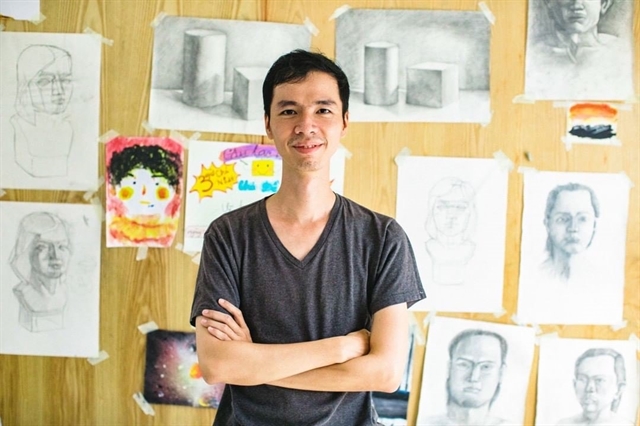
|
| Lương Linh is an illustrator and author based in HCM City. Photo courtesy of the artist |
The 144-page book not only provides an insight into the origin and secrets of the art but also introduces 184 water puppetry characters in diverse designs, from the very oldest to the most modern. Some designs have never been unveiled before as they were made for new plays.
A large number of vivid and beautiful images are accompanied by simple and understandable information about water puppetry, an art form that has long been considered the ‘soul’ of water rice farming life.
The idea for Telling Stories above Water came to the 35-year-old artist in 2017 when he was participating in the Superman's Bookcase Project and realised the appeal of the puppets to children.
During the project, he set up a small puppetry group to tell stories and read books to children in the Central Highlands province of Lâm Đồng, the southwestern region, and several schools in HCM City.
“Through the art of visual storytelling, I want to make seemingly dry theoretical information more accessible to the younger generation. The puppets act as an intermediary to make children believe in fantasy stories,” Linh said.
“As soon as the Superman Bookcase Project developed into a book publishing programme, I chose water puppetry as the theme for the project's first book series.”
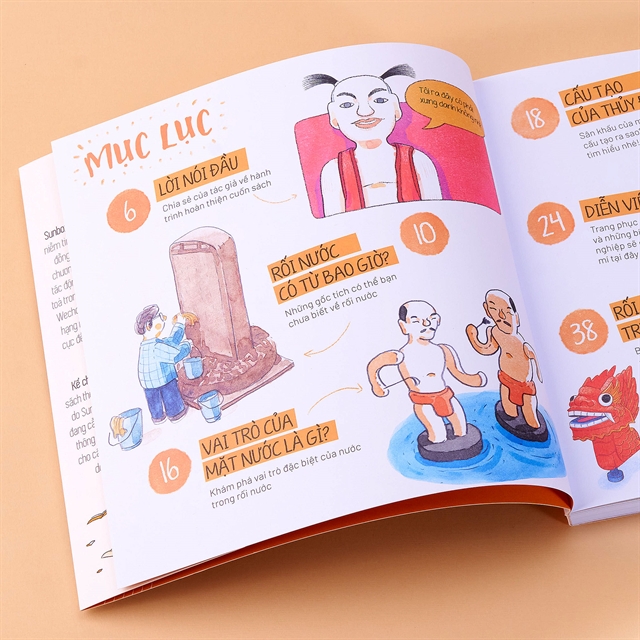
|
| 'Telling Stories above Water' took Linh four years to finish. Photo courtesy of Sunbox |
Prior to Telling Stories above Water, Superman's Bookcase unveiled the book Một Phường Rối Nước (A Water Puppetry Troupe), also created by Linh and another author, Thiên Lộc, together with a set of water puppetry toys that were much-welcomed by the public.
To ensure accuracy in the book, the young artist studied the works of prestigious researchers such as Tô Sanh, Nguyễn Huy Hồng and Professor Trần Văn Khê, which are archived in the national library.
He also spent four years travelling Việt Nam from the north to the south to meet insiders of the art, which has a history of over 1,000 years, to supplement the perspectives of the puppeteers.
“I was fortunate to meet artist Ngô Quỳnh Giao, former director of the Việt Nam Puppet Theatre. As a participant in the restoration schemes of folk art in the 1980s, he told me a lot about the development of water puppetry from a folk art to a kind of theatrical performance,” Linh said.
“The most impressive piece of advice he gave to me is that my sketches looked more like humans than puppets. He told me that the sketches should begin with a piece of wood before being added with hands, legs and moving joints.
“Finally, I was taught how to paint the puppets' faces. I was guided by the artists on how to draw the eyes, noses, and mouths of the traditional water puppets. Giao joked with me that a professionally-trained artist like me, accustomed to drawing humans, might struggle to draw puppets.”
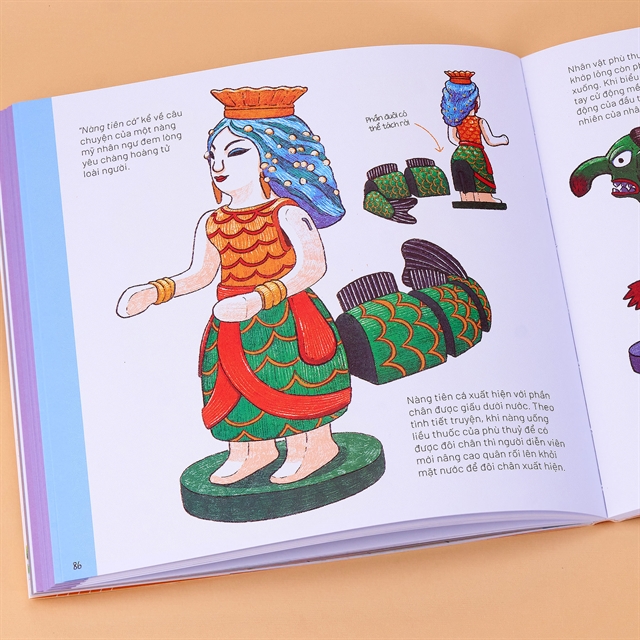
|
| A mermaid puppet depicted in Telling Stories above Water. Photo courtesy of Sunbox |
Linh said the most difficult aspect of the project was depicting the newly created puppets, which are different from traditional ones.
“Traditional water puppets are made from soft wood and have a short lifespan so only a few of them are preserved in theatres these days. Some lucky ones have been photographed or filmed but with limited image quality. So, I had to consult with the makers of nearly 200 puppets illustrated in the book, which was really time-consuming,” he said.
Figuring out how to illustrate the water puppets, especially their faces, was also a huge challenge. The drawing of the puppets’ faces has changed over time, so there is a difference between traditional and modern theatres.
At first, the illustrator took an approach of realistic drawing, depicting in detail many angles of the puppets, and then simplified and reduced the details before finally coming up with the style seen in the book.
Currently, Linh is learning about hát bội (classical drama) and is considering a project on it for his next book.
“I thought it would be interesting to create a book on water puppetry, an art form that originated in the Red River Delta, and then another on hát bội, a traditional art genre that used to be popular in southern provinces.” VNS




